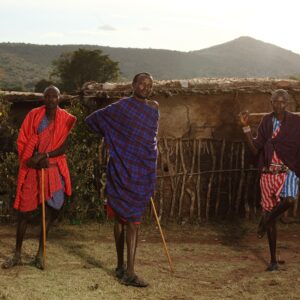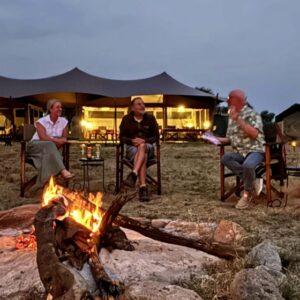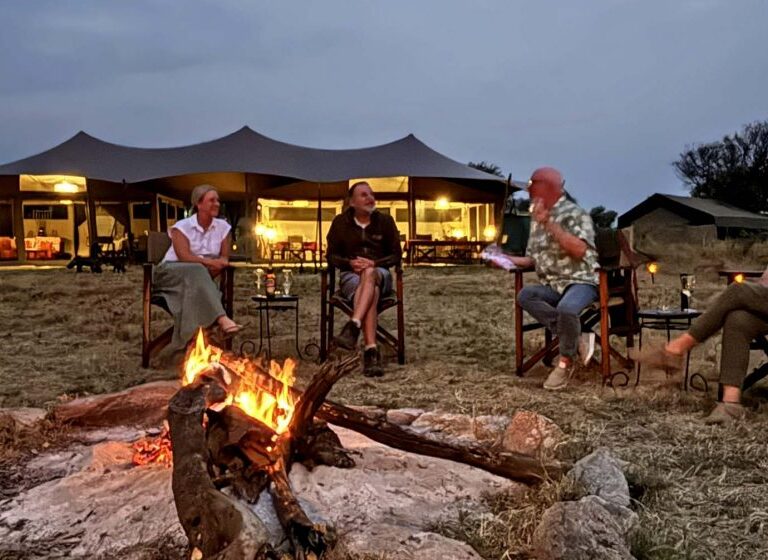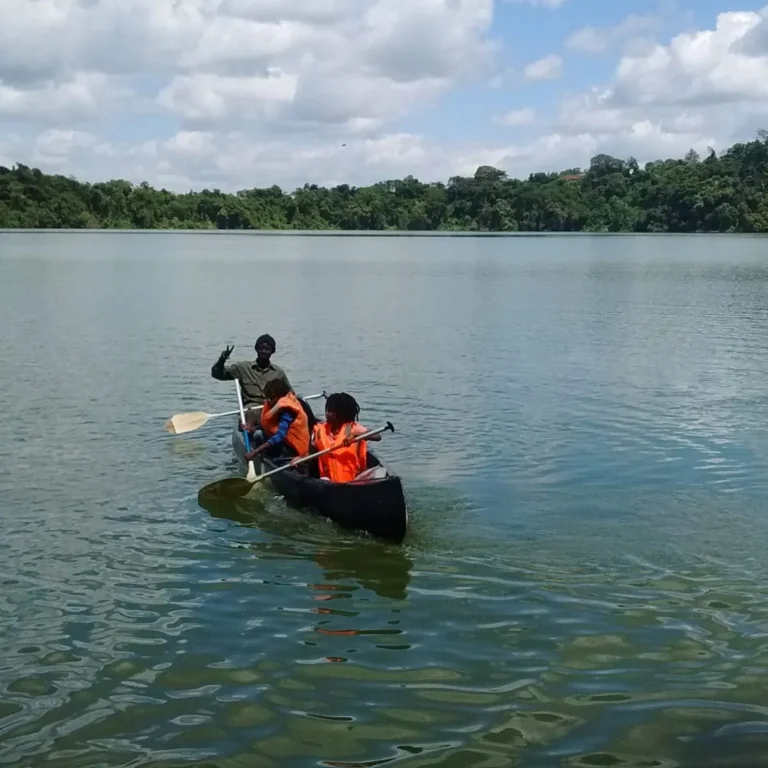For many, the dream of Africa is a powerful, persistent whisper – a call to wild landscapes, majestic creatures, and cultures as ancient as time itself. East Africa, a vibrant tapestry of diverse ecosystems. Iconic wildlife and welcoming communities. Stands as the quintessential gateway to this magnificent continent. It’s a region that consistently captivates the hearts of first-time visitors, offering an unparalleled blend of adventure, natural beauty, and profound cultural encounters. From the thundering hooves of the Great Migration to the misty peaks where gorillas roam. And from snow-capped mountains piercing the sky to idyllic, spice-scented islands. East Africa presents an extraordinary introduction to the continent. This guide is crafted for those embarking on their inaugural African journey. Highlighting the best places to visit for an unforgettable and truly transformative experience.
1. Serengeti National Park, Tanzania: The Quintessential Safari Dream
The Serengeti. The very name evokes images of endless plains teeming with wildlife, and for good reason. As one of the world’s most famous national parks, the Serengeti delivers the quintessential safari experience, making it an ideal choice for first-timers.
Why it’s Great for First-Timers? Its vast, open grasslands provide superb visibility, making wildlife spotting relatively easy even for novice safari-goers. The sheer abundance of animals here guarantees an awe-inspiring introduction to Africa’s fauna.
What to Expect? The Serengeti is globally renowned for the Great Wildebeest Migration, an epic annual journey of over two million wildebeest, zebras, and gazelles. Depending on the time of year (which influences where the herds are located). You could witness dramatic river crossings, the thrumming movement of massive herds across the plains, or the tender scenes of the calving season. Beyond the migration, the park boasts an incredibly high density of predators. Including Africa’s largest lion prides, elusive leopards, swift cheetahs, and opportunistic hyenas. Vast herds of elephants, buffalo, giraffes, and numerous antelope species complete the picture. Ensuring thrilling game drives at every turn. The sense of boundless wilderness here is truly profound.
2. Ngorongoro Crater, Tanzania: Africa’s “Garden of Eden”
Often hailed as one of the natural wonders of the world, the Ngorongoro Crater offers a concentrated wildlife experience that is perfect for first-time safari enthusiasts.
Why it’s Great for First-Timers? This natural amphitheater boasts one of the highest densities of wildlife in Africa within its relatively confined caldera. This means an almost guaranteed chance to see the Big Five (lion, leopard, elephant, buffalo, and the critically endangered black rhino) in a single day, minimizing travel time between sightings.
What to Expect? The Ngorongoro Crater is the world’s largest intact, unflooded volcanic caldera, a breathtaking geological marvel. Its fertile floor, nourished by volcanic soil and permanent water sources, supports an estimated 25,000 large mammals year-round. Beyond the Big Five. You’ll encounter immense herds of wildebeest and zebras, numerous gazelles, hippos wallowing in pools, and a vibrant array of birdlife. The descent into the crater is an experience in itself, revealing a pristine ecosystem that feels like stepping into a lost world. The surrounding Ngorongoro Conservation Area. Also offers cultural interactions with the semi-nomadic Maasai people and access to Olduvai Gorge, a pivotal archaeological site shedding light on early human evolution.
3. Mount Kilimanjaro, Tanzania: Africa’s Iconic Peak
For those seeking an active adventure that culminates in an unparalleled sense of achievement, Mount Kilimanjaro calls. Africa’s highest peak is not just for seasoned mountaineers; with the right preparation and guidance, it’s achievable for many first-timers.
Why it’s Great for First-Timers? While a full summit attempt is physically demanding, well-established routes and highly professional local guides make the ascent safe and manageable for fit beginners. Even if you don’t aim for the summit, day hikes on the lower slopes offer a taste of its unique ecological zones.
What to Expect? A multi-day trek up Kilimanjaro is a journey through diverse ecosystems, from the lush rainforest at its base to alpine deserts and ultimately, the arctic-like summit zone with its receding glaciers. The “pole pole” (slowly, slowly) pace is crucial for acclimatization, allowing you to absorb the breathtaking natural beauty and witness dramatic shifts in landscape. Reaching Uhuru Peak, “Africa’s Rooftop,” is an intensely emotional experience. A triumph of personal resilience and endurance that leaves an indelible mark. The camaraderie formed with fellow trekkers and the incredibly dedicated local support team is often cited as one of the most rewarding aspects of the climb.
4. Zanzibar Archipelago, Tanzania: The Spice Island Paradise
After the dust and excitement of a safari, Zanzibar offers the perfect tranquil counterpoint, blending pristine beaches with rich history and vibrant culture.
Why it’s Great for First-Timers? It’s easily accessible by short flight from Tanzania’s safari hubs, boasts well-developed tourism infrastructure, and offers a safe, relaxing, and culturally enriching experience.
What to Expect? Zanzibar, often called the “Spice Island,” enchants visitors with its powder-soft white sand beaches, crystal-clear turquoise waters, and vibrant coral reefs ideal for snorkeling and diving. Its historical capital, Stone Town, is a UNESCO World Heritage site, a labyrinthine maze of narrow alleys, bustling markets. And ancient buildings reflecting centuries of Swahili, Arab, Indian, and European influences. You can embark on spice farm tours, explore historical sites, indulge in fresh seafood, and simply unwind under swaying palm trees. The unique blend of relaxation and cultural exploration makes it an irresistible addition to any East African itinerary.
5. Tarangire National Park, Tanzania: The Elephant Kingdom
Located within easy reach of Arusha, Tarangire offers a distinct and often less crowded safari experience compared to the Serengeti, making it a great option for those who prefer a more tranquil introduction to wildlife.
Why it’s Great for First-Timers? It boasts an exceptionally high density of elephants, especially during the dry season, providing incredible and reliable sightings. Its unique landscape of majestic baobab trees also offers a visually distinct safari backdrop.
What to Expect? Tarangire’s defining feature is its colossal elephant herds, often numbering in the hundreds, which congregate along the permanent Tarangire River. Beyond the giants, the park is home to a good population of lions (including rare tree-climbing lions). Leopards, cheetahs, and vast numbers of plains game like wildebeest, zebra, and various antelopes. The park’s diverse habitats also make it a paradise for birdwatchers, with over 550 species recorded. It offers a classic safari feel with ample space to enjoy the wildlife in relative solitude.
6. Lake Manyara National Park, Tanzania: A Scenic and Compact Gem
This relatively small and accessible park offers a surprisingly diverse range of habitats in a compact area. Making it an ideal inclusion for a shorter game drive or as part of a larger Northern Circuit itinerary.
Why it’s Great for First-Timers? Its varied ecosystems are easily explored. Offering a quick yet comprehensive taste of safari wildlife and unique features.
What to Expect? Lake Manyara is famed for its beautiful alkaline soda lake. Which a seasonally shimmering with thousands of pink flamingos, along with other water birds. The park’s groundwater forests, acacia woodlands, and open grasslands support a rich array of wildlife. Including a high density of baboons, elephants, and hippos. While not guaranteed, Lake Manyara is also one of the few places where you might spot its famous tree-climbing lions. The lush green scenery and abundant birdlife contribute to a very picturesque and rewarding safari experience.
7. Arusha National Park, Tanzania: The Accessible Wilderness Hub
As the closest national park to Arusha city, often dubbed the “safari capital” of Tanzania’s northern circuit, Arusha National Park is incredibly convenient for first-timers.
Why it’s Great for First-Timers? It’s perfect for a day trip, offering a taste of safari without requiring extensive travel time. It also provides unique activities beyond traditional game drives.
What to Expect? Despite its smaller size, Arusha National Park boasts incredibly diverse landscapes, from the lush rainforests of Mount Meru’s lower slopes to the vibrant Momela Lakes (often shimmering with flamingos) and the rugged peaks of the Ngurdoto Crater. While you won’t find the Big Five here, you can easily spot giraffes, zebras, buffalo, warthogs, various antelope species, and a remarkable array of primates, including blue monkeys and the striking black-and-white colobus monkeys. Unique activities like canoeing safaris on the Momela Lakes and guided walking safaris allow for a different, more intimate perspective of the wilderness.
8. Volcanoes National Park, Rwanda: The Gorilla Trekking Dream
For those seeking a truly unique and deeply moving wildlife encounter, venturing slightly beyond Tanzania into Rwanda offers the extraordinary opportunity to trek with mountain gorillas.
Why it’s Great for First-Timers? While a specialized experience, Rwanda’s gorilla trekking is incredibly well-organized and provides a highly ethical and intimate encounter with these magnificent primates in their natural cloud forest habitat. The country’s stability and efficient tourism infrastructure make it an accessible option.
What to Expect? Located in the misty Virunga Mountains, Volcanoes National Park is home to a significant portion of the world’s critically endangered mountain gorillas. A gorilla trek involves hiking through dense rainforest with experienced trackers. Often for several hours, to find a habituated gorilla family. Once located, you spend a magical hour observing them, an experience often described as profound and deeply emotional. The park also offers golden monkey trekking and stunning volcanic scenery.
9. Lake Eyasi, Tanzania: Authentic Cultural Encounters
Located in the Rift Valley, near the Ngorongoro Conservation Area, Lake Eyasi offers a profound cultural experience that complements a wildlife safari, perfect for those seeking a deeper connection with local traditions.
Why it’s Great for First-Timers? It provides a unique opportunity to step away from traditional game drives and engage directly with indigenous communities, offering a glimpse into ancient ways of life.
What to Expect? Lake Eyasi is home to the Hadzabe (Bushmen), one of Tanzania’s last remaining hunter-gatherer tribes, and the Datoga, a pastoralist tribe. Visiting these communities offers a rare chance to learn about their ancient lifestyles, participate in a Hadzabe hunting expedition. Learn about their foraging techniques, or witness the Datoga’s traditional blacksmithing skills best places to visit in East Africa for first-timers. This immersive cultural interaction provides a powerful contrast to the wildlife viewing and adds immense depth and perspective to your African journey.
10. Ruaha National Park, Tanzania: The Wild Heart of the South
For first-timers seeking a more remote and exclusive safari experience, away from the more trodden paths, Ruaha offers an unparalleled sense of untouched wilderness.
Why it’s Great for First-Timers (seeking true wilderness)? As Tanzania’s largest national park, Ruaha receives significantly fewer visitors than the northern circuit. Ensuring a truly intimate and uncrowded safari. Its exceptional wildlife viewing, especially for elephants and lions, makes the journey worthwhile.
What to Expect? Dominated by the Great Ruaha River, this park is a lifeline for immense herds of elephants (Tanzania’s largest population) and colossal buffalo gatherings best places to visit in East Africa for first-timers. It’s famed for its very large lion prides and good sightings of leopard and cheetah best places to visit in East Africa for first-timers. Ruaha’s unique mix of East and Southern African wildlife. Including the rare Greater Kudu and Sable Antelope provides a rich and diverse safari. Access is typically by light aircraft, adding to its remote allure best places to visit in East Africa for first-timers.
11. Nyerere National Park (formerly Selous Game Reserve), Tanzania: Africa’s Largest Untamed Expanse
Similar to Ruaha, Nyerere National Park (Africa’s largest protected area) offers an incredibly vast and wild experience with significantly fewer visitors than the northern parks, appealing to first-timers who prioritize vast wilderness.
Why it’s Great for First-Timers (seeking unique activities)? Beyond traditional game drives, Nyerere is renowned for its diverse safari activities, including classic game drives, exhilarating boat safaris on the mighty Rufiji River (offering unique perspectives on hippos, crocodiles, and water birds), and guided walking safaris.
What to Expect? This sprawling park boasts significant populations of elephants, buffalo, and a healthy number of African Wild Dogs, one of the continent’s most endangered predators. The untouched nature and variety of experiences provide a truly immersive and pristine bush experience, feeling profoundly wild and untamed.
12. Lake Natron, Tanzania: An Otherworldly Adventure
For first-timers seeking an utterly unique and visually stunning adventure that diverges from traditional wildlife viewing, Lake Natron offers an otherworldly landscape and cultural encounters.
Why it’s Great for First-Timers (for a distinct experience)? This destination offers a starkly different, almost surreal environment, focusing on geology, birdlife, and cultural immersion rather than big game drives. It’s an unforgettable visual spectacle.
What to Expect? Lake Natron is a highly alkaline soda lake that can turn a vivid red or pink due to microorganisms, creating a surreal, moon-like landscape. It is the primary breeding ground for East Africa’s Lesser Flamingos, a breathtaking spectacle of vibrant pink against crimson waters. In the shadow of Ol Doinyo Lengai, Africa’s only active carbonatite volcano, you can trek to stunning waterfalls, explore ancient gorges, and experience the traditional way of life with the Maasai communities. It’s a raw, adventurous, and visually captivating addition to an itinerary.
Best Places to Visit in East Africa for First-Timers FAQs
For first-time visitors to East Africa, popular destinations include Kenya and Tanzania for safaris like the Serengeti and Maasai Mara, Uganda for its primate tracking and affordable options, and Rwanda for shorter, hassle-free trips. The best time to visit is during the dry season (June–October) for optimal wildlife viewing, but the wet season offers fewer crowds and lower prices.
What is the “Big Five,” and can I see them in East Africa?
The “Big Five” refers to the lion, leopard, elephant, rhino (black or white), and African buffalo. In East Africa, particularly in Tanzania’s Serengeti and Ngorongoro Crater, you have excellent chances of seeing all five. Rwanda’s Volcanoes National Park offers mountain gorillas instead of rhinos, which are often considered their “Big Five” equivalent.
What is the best time of year for a first-time safari in East Africa?
For optimal wildlife viewing (especially the Great Migration), the dry season (June to October) is excellent. However, the green season (November-May) offers lush landscapes, fewer crowds (especially early in the season), lower prices, and often better birdwatching best places to visit in East Africa for first-timers. For gorilla trekking in Rwanda, the drier months of June-September and December-February are generally preferred.
How long should a first-time trip to East Africa be?
A typical first-time safari in Tanzania’s Northern Circuit (Serengeti, Ngorongoro, Tarangire, Manyara) is usually 5-7 days. Adding a beach extension in Zanzibar or a gorilla trek in Rwanda can extend the trip to 10-14 days or more.
Is it safe to travel to East Africa for a first-time visitor?
Yes, East Africa is generally considered safe and welcoming for tourists. It is crucial to book with a reputable tour operator who prioritizes safety and handles logistics. As with any travel, exercise common sense and be aware of your surroundings, especially in urban areas.
What kind of luggage should I bring for a safari?
You must bring soft-sided luggage (duffel bags are ideal) best places to visit in East Africa for first-timers. Hard-sided suitcases are often not allowed due to strict weight and size restrictions on internal light aircraft flights. Limits typically range from 15-20 kg (33-44 lbs) per person, including carry-on.
Do I need vaccinations or malaria medication?
Yes. Consult your doctor or a travel clinic well in advance (at least 6-8 weeks before your trip) to discuss required and recommended vaccinations (e.g., Yellow Fever, Hepatitis A & B, Typhoid) and malaria prophylaxis.
Can I combine a safari with a beach holiday or gorilla trekking?
Absolutely! Combining a safari with a beach stay in Zanzibar is very popular. Many visitors also combine a Tanzanian safari with gorilla trekking in Rwanda (requiring flights between the two countries).
What kind of clothing should I pack for a safari?
Stick to neutral colors (khaki, olive green, grey, tan) and pack layers (long-sleeved shirts for sun/insect protection, a warm fleece/jacket for cool mornings/evenings). Comfortable closed-toe shoes, a wide-brimmed hat, sunglasses, and insect repellent are essential.
Is East Africa suitable for family travel with children?
Many lodges and tour operators cater specifically to families, offering child-friendly activities and guides. It’s an incredibly enriching experience for children, but it’s important to choose age-appropriate itineraries and accommodations.
What are the main differences between Tanzania and Kenya for a safari?
Both offer fantastic safaris. Tanzania’s Northern Circuit is famous for the Great Migration (calving season) and the Ngorongoro Crater. Kenya’s Maasai Mara is famous for the Great Migration (river crossings) and offers conservancies for more exclusive experiences. Both are excellent choices, often differing more in specific logistical details and landscape nuances.
- What to Expect on a Safari in Tanzania
- What to Expect When Climbing Kilimanjaro
- The Best Places to Visit for First-Timers
- Top Tips for Planning Your Ultimate East Africa Safari
- 10 Best East African Tour Companies & Operators
Top 10 East African Safari Destinations for First-Time Travelers
Top East African safari destinations for first-time travelers include Kenya’s Maasai Mara and Amboseli, Tanzania’s Serengeti and Ngorongoro Crater, and Uganda’s Bwindi Impenetrable National Park for gorilla trekking. These locations offer diverse landscapes, abundant wildlife like the Big Five, iconic events like the Great Migration, and a variety of experiences for first-time visitors.
Bespoke East Africa Itineraries For Returning Visitors
Bespoke itineraries for returning visitors to East Africa often focus on deeper experiences, such as private conservancies in Kenya for unique wildlife encounters like rhino tracking, multi-country adventures combining Tanzania’s Serengeti with Uganda’s gorilla trekking, or off-the-beaten-path activities like cultural experiences with the Samburu people. Activities can include private guided trips, flying safaris, or unique options like horse riding, camel trekking, or fly camping.
Why Choose a Local Tour Operator For Safari in East Africa?
Choosing a local East African tour operator offers benefits like unparalleled local knowledge, authentic cultural insights, and professional guides who understand the terrain and wildlife. Local operators often provide personalized and flexible itineraries, support local communities through sustainable tourism practices, and may have better-maintained and reliable vehicles.
A First-Timer’s Guide to Planning a Safari in East Africa
To plan your first East African safari, determine your travel dates and budget, choose a country and specific parks like Kenya’s Maasai Mara or Tanzania’s Serengeti, and decide on the season, as the dry season (June-October) is ideal for wildlife viewing but the green season (November-March) offers fewer crowds and lower prices. It is crucial to book well in advance, especially for peak season, and to pack versatile clothing, a water-resistant jacket, and to be mindful of responsible and sustainable travel practices like respecting wildlife and using local guides.
A first-time guide to East Africa
For a first trip to East Africa, focus on the best time to visit (dry season, May-October) and the most popular destinations for wildlife viewing, such as Kenya and Tanzania. Pack light, breathable, neutral-colored clothing, get necessary travel vaccinations, and ensure you have travel insurance covering remote areas.
How to Choose the Best Safari Tour Operator in East Africa?
To choose the best East African safari tour operator, you should research their reputation, check for professional affiliations, and verify their commitment to responsible and sustainable travel. Look for consistent, authentic client testimonials on independent review sites, a valid physical office, and proper licensing. It is also crucial to assess the quality of their vehicles and ensure the company offers customizable itineraries with knowledgeable local guides.








